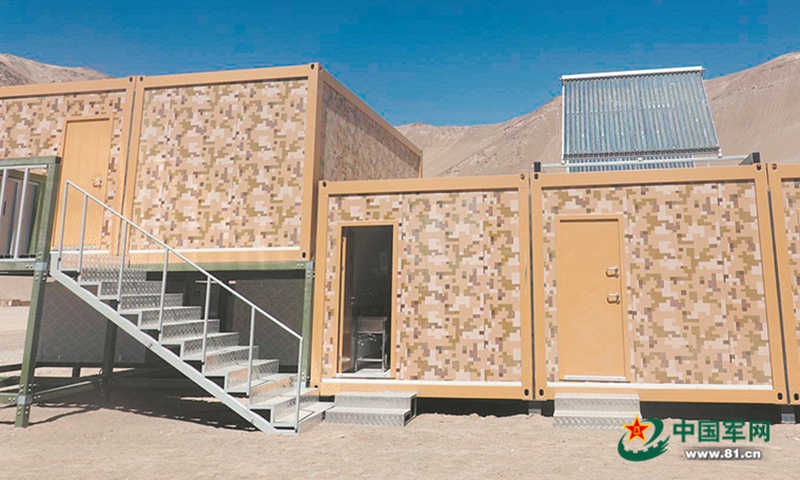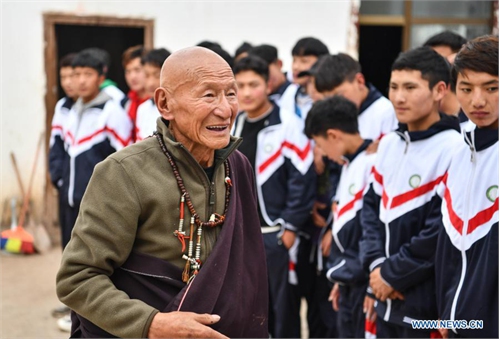
The new type of self-powered dismountable insulated cabin is in service with the Chinese People's Liberation Army (PLA) border defense troops in a high-altitude region in Northwest China. Photo: 81.cn
Since the deployment, about a month ago, of the newly developed, self-powered dismountable insulated cabins along the borders in the high-altitude region in Northwest China amid the prolonged border tensions between China and India, the living conditions and combat capability of the Chinese People's Liberation Army (PLA) border defense troops have been greatly enhanced as the region entered winter.
Officers and soldiers of the PLA Xinjiang Military Region were wearing only short-sleeved shirts in the cabins, the PLA Daily reported on Monday.
Thermometers show that while the outside temperature was -15 C, the temperature inside the cabins was 19 C. The heat source comes from solar energy gathered by photovoltaic units, meaning the cabins are self-powered and do not require extra fuel or electricity, reducing reliance on long-distance transport of fuel from other locations, Cheng Linqi, a PLA border defense company commander, was quoted by the PLA Daily as saying.
It is usually very cold in high-altitude regions, particularly at night when troops are about to sleep, and this adds to the lack of oxygen. Some years ago, the troops had few tools to warm up their living facilities, and will often not rest well and wake up from the harsh cold and headaches, a retired PLA officer who was deployed in Southwest China's Tibet Autonomous Region told the Global Times on Monday on condition of anonymity.
The new cabins mean the troops not only get better living conditions, but also gain superior combat capabilitiescompared to their hostiles who do not have this kind of advanced facilities at their disposal, the veteran said.
The dismountable function of the cabin also benefits the PLA troops. Cheng said that the cabins were assembled by the troops in just a few days, without using any large machinery.
Thanks to the lightweight materials and modular design, the assembly is like playing with blocks, and the cabins can be built as big as needed, Zhang Xingzhen, a soldier who participated in the assembly, told the PLA Daily.
Since more than 90 percent of the parts can be reused, after missions are completed at one location, the cabins can be dismounted and moved to the next location, Zhang said.
This gives the PLA border defense troops significant tactical flexibility, as they could bring their warm camps with them all the times, analysts said.
The development of this type of cabin officially started in 2019, according to the PLA Daily report.
The cabins, consisting of modules including dormitories, canteens, washrooms, toilets and storage rooms, were deployed in high-altitude regions with the border defense troops in October, the PLA Daily reported at that time.
The prolonged standoff in the China-India border region is a battle of endurance, logistical support and morale, and the deployment of the cabins shows all-round military preparedness of the PLA, analysts said.


